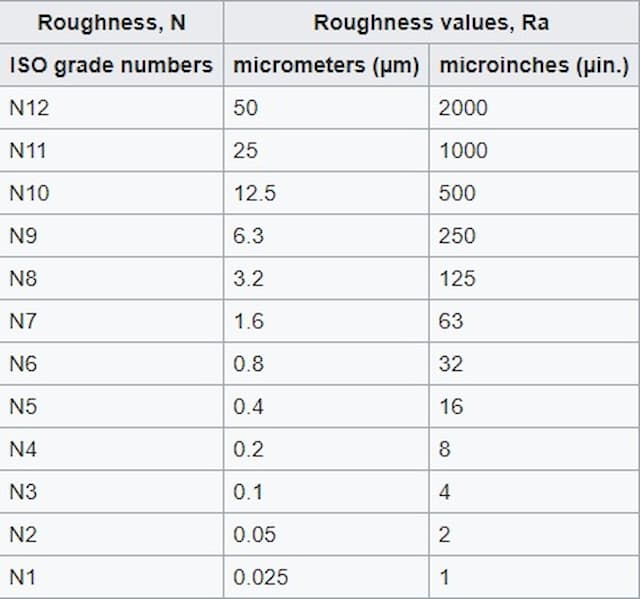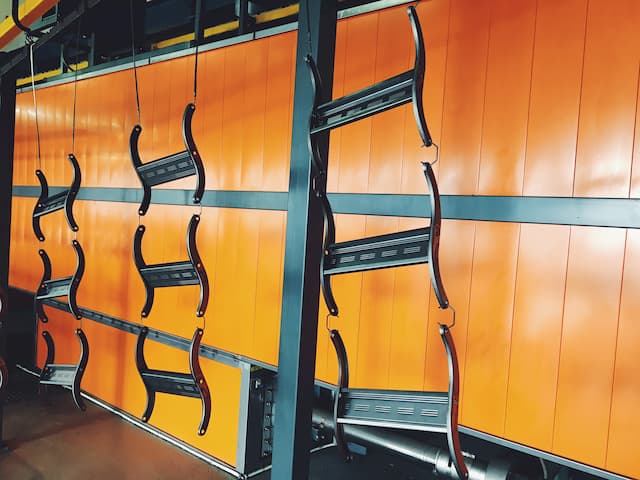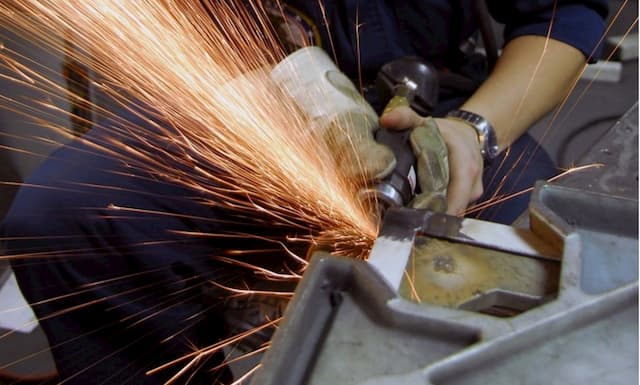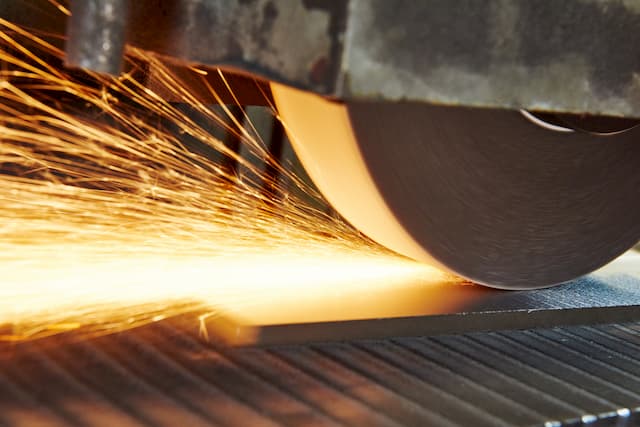Metal products surround us everywhere. Some are shiny, others matte. Some are metallic, others coloured. The looks of a metal object depend solely on one thing – its surface finish.
But there is another side to the surface finish besides looks, a more practical one. And this is exactly what we are exploring in this article along with the different popular techniques to achieve effects.
What Is a Surface Finish?
Surface finish is a term that refers to the process used to alter a metal’s surface by adding, removing or reshaping. The goal is to protect the metal and improve the aesthetic side.
The result depends on the metal finishing method. Often, there are a few different ways to achieve the same or similar results.
For example, metal finishing that involves a coat of paint can be done through anodising, powder coating or wet painting. The results are similar but not the same.
The Importance of a Surface Finish
A proper surface finish ensures that the final product looks better and lasts longer. So the biggest beneficiary is the end-user. At the same time, some surface finishing techniques also help manufacturers in the production process.
For example, brushing the surface before applying paint increases the metal’s adhesion. This makes a good-quality finish easier to obtain.
Among the many benefits obtained from surface finish processes, we can highlight the following:
- Increased corrosion resistance
- Helping with the adhesion of paint and other coatings
- Elimination of surface defects
- Increased resistance to chemicals
- Improved conductivity and added surface electrical conduction
- Increased strength and resistance to wear while the friction effects are minimised
- Enhanced aesthetics
Clearly, surface finishing brings along some great qualities. And this list is not comprehensive, it only includes the most common reasons for applying a surface finish.
What Is the Unit of a Surface Finish?
One way to compare surface finishes is by looking at the surface roughness. Roughness represents the smoothness of the surface. But a smoother surface is not always advantageous. Rather, it depends on the use case.
There are several parameters for showing the surface roughness. The most common is Ra. This shows the arithmetical mean deviation on the surface.
In essence, a smaller number means a smoother surface. Usually, surface roughness is shown in micrometres. There is also a standardised table for ISO grades that each account for a certain roughness value.

Stainless steel finishes have a different set of standards for displaying quality. Read more on that from the linked article.
How Is Surface Roughness Measured?
Measuring the surface roughness of a metal involves analysing the irregularities found on the surface. This analysis can be done in two ways.
Firstly, you can do it manually with a surface roughness comparator which is not very accurate. If in need of precise measurements, turn to a surface profile scanner.
The latter is also the most common method because of its accuracy.
- Personal account manager
- Quality assurance
- Payment terms for companies
- On-time delivery by Fractory
What Are the Types of Surface Finishes?
As we already discussed, surface finishes fall into two different categories. Firstly, we can either add a layer to the surface or alter the existing surface. The second option is to remove a layer or reshape the existing surface.
Adding and Altering Processes
There are quite a few methods that fall under this category. Wet painting, anodising, cladding, galvanising, etc. are all adding processes. We will give a better overview of only a few of the most popular methods.
Electroplating

Electroplating, also known as metal plating, is a process that involves the use of electricity, as you can assume by the name. It consists of making an electric current pass through a fluid called the bath. The bath is a solution containing ions of the metal being added and the material being treated, the latter usually called the substrate.
When applying the electric current, the substrate works as a cathode. Thus, it attracts the ions in the bath which are deposited on the treated surface.
This process provides a series of advantages that include increased durability, improved corrosion resistance, reduce surface friction and better aesthetics.
Almost every metal can be treated with this process. However, the most common materials to use the method are copper, nickel, gold, silver, etc.
Pickling
This is an altering metal finishing. The main use of pickling is to eliminate impurities and irregularities on the surface of the metal components. The method uses a substance called pickle liquor which usually contains some type of acid.
Pickling is almost always part of the metal manufacturing process. Hot working usually leaves an oxide layer called scale. Pickling helps to clean the surface by descaling it.
The liquor may also include additives which help to improve the properties of metal such as corrosion resistance.
Pickling comes with some dangers of its own, however. The acids themselves may be corrosive. Some alloys and high-carbon steels may end up with a brittle and cracked surface as a consequence.
As a result, pickling is usually performed before other surface treatment processes, as these will in turn eliminate the problems that arise during pickling.
Powder coating

Another adding process which involves the use of electricity. Instead of applying a current through a liquid as in electroplating, static is used to deposit a dry powder.
After the powder is deposited electrostatically, the metal part is taken into a special oven to promote better adhesion of the powder through a chemical reaction.
Powder coating is commonly used in the automotive industry, tools manufacturing and military applications.
Removing and Reshaping Processes
The processes in this category include removing a layer from the surface or reshaping it. Some common methods include laser engraving, etching, blasting, etc. We are again focusing on a few of those methods in a little more depth.
Grinding

Grinding belongs to the group of machining processes known as abrasive machining. This process is used to remove irregularities on the surface of the metal by using a grinding wheel.
Grinding can result in a good smooth surface that has little irregularities. It is also useful for descaling after hot working. Or deburring a workpiece after metal cutting.
Common metals to go through the grinding process include aluminium, brass, cast iron, mild steels and stainless steels.
Electropolishing
This process is similar to electroplating in the fact that it uses electricity and chemical reactions. But it is the opposite because with electropolishing the ions are not deposited. Instead, they are removed from the surface being treated.
The main application of electropolishing is deburring and reducing the average surface roughness. The result is a smooth, level and clean surface, free of irregularities.
To achieve it, the metal component is submerged in a bath with electrolytes which transform it into an anode.
Typical metals treated with electropolishing include 300 and 400 series stainless steel, aluminium, copper, titanium, and nickel and copper alloys. These metals are especially electropolished when used in the food, medical and pharmaceutical industries.
Lapping
ARVE error: url: https://www.googleapis.com/youtube/v3/videos?part=snippet%2Cstatistics&id=Z6togIVqC4M&key=AIzaSyAQ7WFzTAUrOX-FjsIrFS3JwZBFzgIvloc Status code 200 expected but was 403.
Similar to grinding, lapping uses abrasive grains to remove material and achieve a fine surface finish. The difference is that lapping uses the grains suspended in a fluid based on oil.
The fluid with the grains is applied on the surface with a lapping tool used to apply pressure and move the grains back and forth to remove the irregularities.
This process can be done manually, but there are lapping machines that help achieve greater consistency and efficiency. Lapping is commonly used on metals that find use in the process of producing: optical lenses, different types of bearings and gauges where fine finishes and high precision is required.
How to Choose?
The process you choose to obtain the surface finish you require depends on different aspects. In general, the most important is analysing the following three:
- Production speed. Consider how fast you need to deliver. Compare the processing times of each metal finishing option available to you.
- Hardness of metal. This is especially important when using processes in the second category. The harder the metal you have at hand, the more intense or stronger the abrasive you will need. However, you don’t want to go too hard with softer materials as this could result in damages to the parts that may be difficult to repair.
- Cost and budget. Of course, there could be processes that may seem the best option for your specific application. However, some of the most complex processes may require tools and equipment that may cause you to go over your budget. Make sure your decision is cost-effective.




